Instructions and Tutorial for TTB F 5110.11
Instructions and Tutorial for TTB F 5110.11.docx
Distilled Spirits Plants Warehousing Records (TTB REC 5110/02), and Monthly Report of Storage Operations
Instructions and Tutorial for TTB F 5110.11
OMB: 1513-0039
Instructions and Tutorial for TTB F 5110.11, Monthly Report of Storage Operations, posted to the TTB website form’s page at http://www.ttb.gov/forms/ index.shtml.
TTB Form 5110.11
==========================================
|
Before
You Begin Checklist Purpose The purpose of completing TTB Form 5110.11 is to report storage account activity for a Beverage or Industrial Distilled Spirits Plant. This report is to be filed if the operation of warehouseman is shown on your permit and registration. If there is no activity during the month, you are required to file the report showing zeros. Deadlines for Filing This form is to be filed no later than the 15th of the month following the reporting period. Forward the original to:
TTB
National Revenue Center Before You Begin Please note – you must complete and submit a storage report on Form 5110.11 for each of these four sources of products that you hold in storage for any given month:
For example, your plant is holding several types of spirits products produced in the US, plus you hold in storage Scotch Whisky, Canadian Whisky, and Puerto Rican Rum. You would complete three Forms 5110.11 for each month when you hold these types of spirits products. You must check the appropriate block at the top of the form under “Report Covers”. In this example, you would show the Canadian whisky and Scotch whisky on the “Imported Spirits” storage report, and the Puerto Rican rum on the “Puerto Rican Spirits” report. You would also complete a “Domestic Spirits and All Wines” storage report for your other products. SPECIAL NOTES REGARDING COMPLETION OF FORM 5110.11:
The following is a list of all the materials and related information you should collect before beginning Form 5110.11.
|
To
download a PDF file, you must have Adobe Acrobat Reader software
installed
on your system. To download a free copy of
Adobe Reader, click
here.
==================================================
Frequently
Asked Questions Instructions The TTB Form 5110.11 in this tutorial has been enhanced to provide links to frequently asked questions (FAQ) about various areas of the form. To display the FAQ information for a relevant section, simply roll over the desired section/field. To access the form, click the Form link on the left or click here. |
|
1. |
What is a proof gallon and how do I convert regular gallons to proof gallons? |
|
A proof gallon is one liquid gallon of spirits that is 50% alcohol at 60 degrees Fahrenheit. For example: Distilled Spirits* bottled at 80 proof (40% alcohol) would be 0.8 proof gallons per gallon of liquid. At 125 proof, a gallon of liquid would be 1.25 proof gallons. In the industrial and fuel industries, most alcohol is at 190 or 200 degrees of proof. One gallon of alcohol that is 200 proof is equal to 2.0 proof gallons. Refer to 27 CFR Part 19 and 27 CFR Part 30 concerning procedures for determining proof, gauging spirits to determine quantity by weight or volume, or other procedures and regulations concerning measurement of alcohol. *(also known in beverage and industrial or fuel industries as alcohol or ethanol) |
2. |
Do I fill out my reports in proof gallons or regular gallons? |
|
Three
of the required monthly operational reports submitted by a
Distilled Spirits Plant (Forms 5110.40 � Production;
5110.11 � Storage; F 5110.28 � Processing) are
completed using proof gallons. The fourth report � Form
5110.43 � Processing (Denaturing) � is completed in
wine gallons (regular US liquid gallons). |
3. |
I am approved for particular types of operations on my permit, how do I know what reports to file? |
|
All plants must be qualified as a warehouseman or distiller, in addition to any processing operations. Your actual operations and the way that you move spirits between and within your production, storage and processing accounts determine how you report your activity.
|
4. |
What if I am not doing all the operations that were approved on my permit? Do I still need to file the reports that correspond to that type of operation? |
|
Yes. You must file the reports even though you do not currently have any reportable activity. However, if your inactivity will be for an extended period of time, you may request a variance from regulations allowing you to defer filing until such time as you engage in reportable operations for one of the reports. For example, if you are qualified as a warehouseman and processor, and your style of operations does not currently involve storage of spirits in bulk (spirits are entered into processing account upon receipt at your plant) you may obtain approval from TTB to defer filing of storage reports until you begin storing spirits. Such approvals are granted on a case-by-case basis. |
5. |
How do I determine whether I am engaged in storage operations requiring filing of the storage report? |
|
Warehousing (storage) of spirits can be a subjective determination. However, here are a few instances requiring a storage report as guidelines:
Generally, storage is when you hold bulk quantities of product without specific plans for further processing. |
6. |
What is a 5010 credit and how do I compute? |
|
Under
26 U.S.C. 5001 and 7652 a tax is imposed on all spirits produced
in or imported into the United States at $13.50 per proof gallon.
Wines containing more than 24 percent of alcohol by volume are
taxed as spirits. A credit against this tax is allowed under 26
U.S.C. 5010 on each proof gallon of alcohol derived from eligible
wine or eligible alcohol-containing flavors which do not exceed
2.5 percent of the finished product on a proof gallon
basis. |
===========================================
Form:
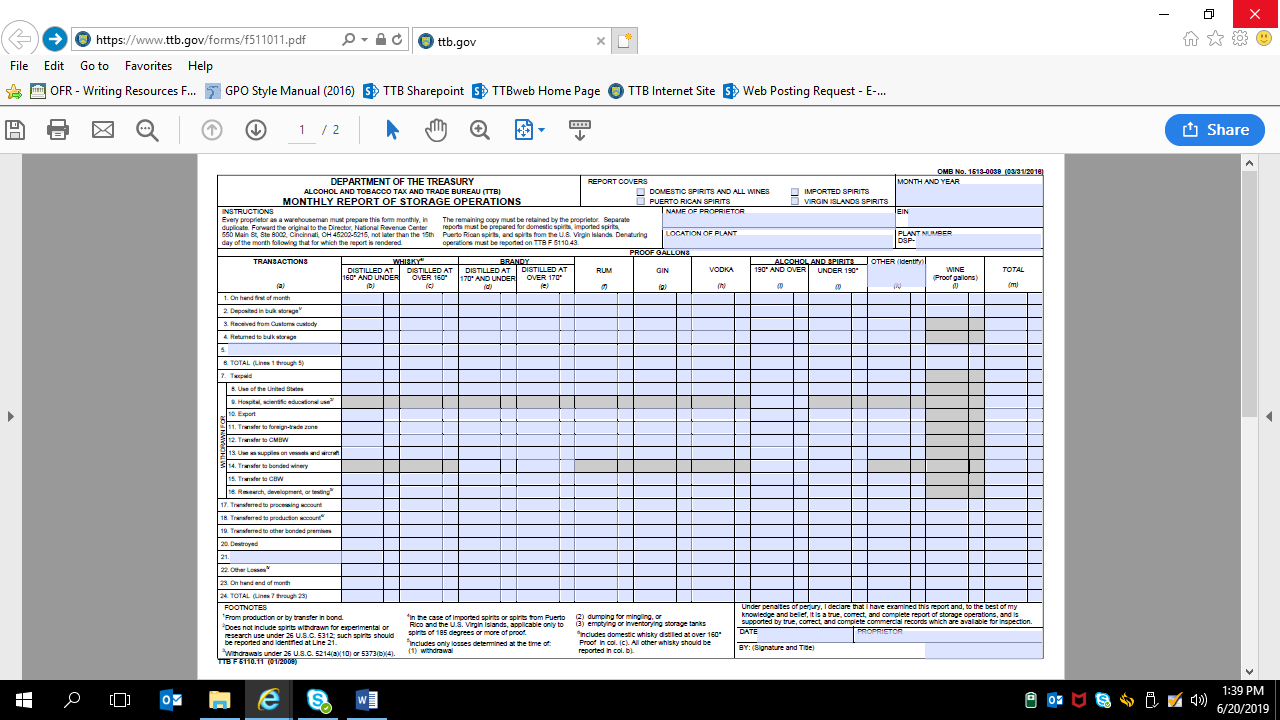
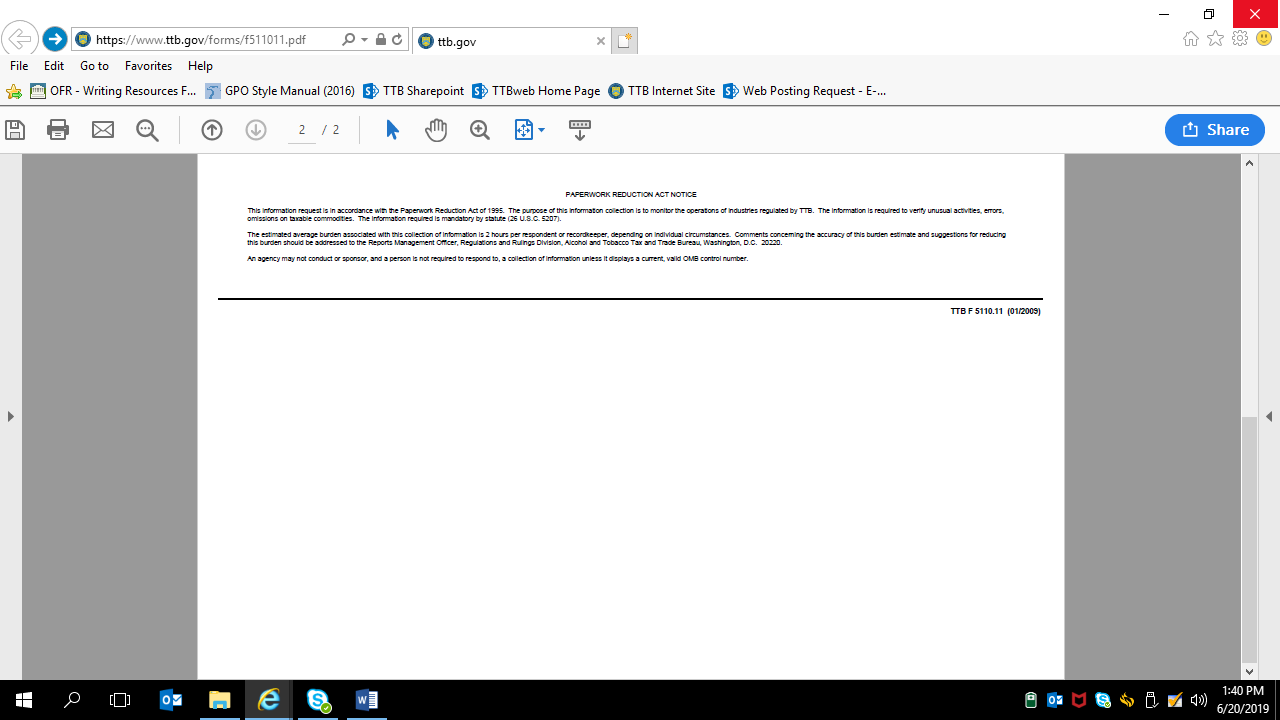
==============================================
Helpful Hints:
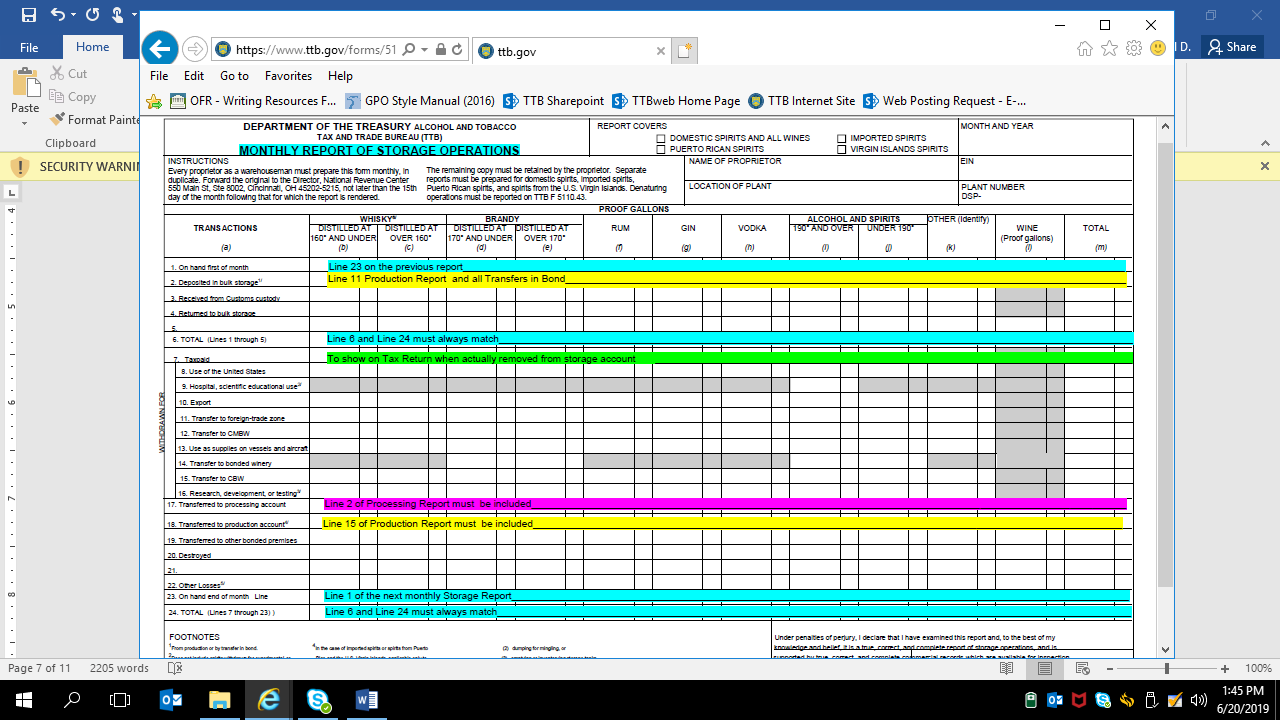
================================================
How to avoid problems with monthly reports |
|
|
|
===============================================
Calculator for Line 6:
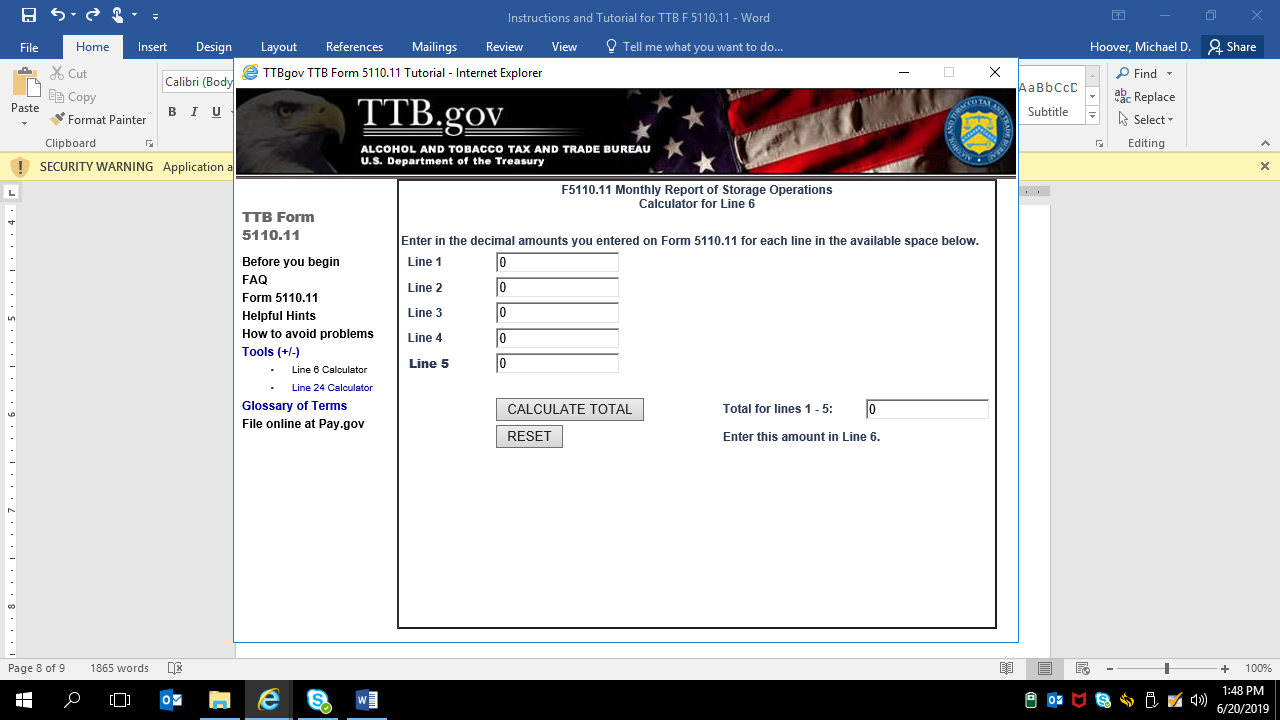
Calculator for Line 24:
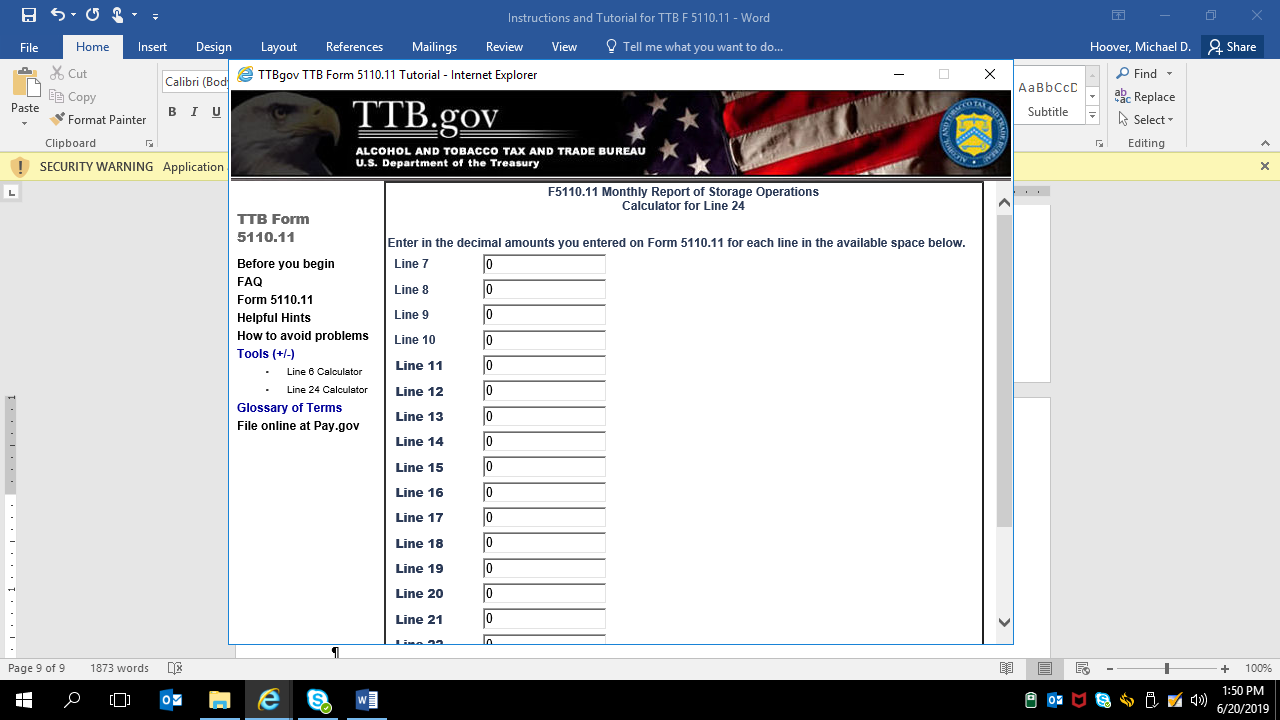
Screen continued:
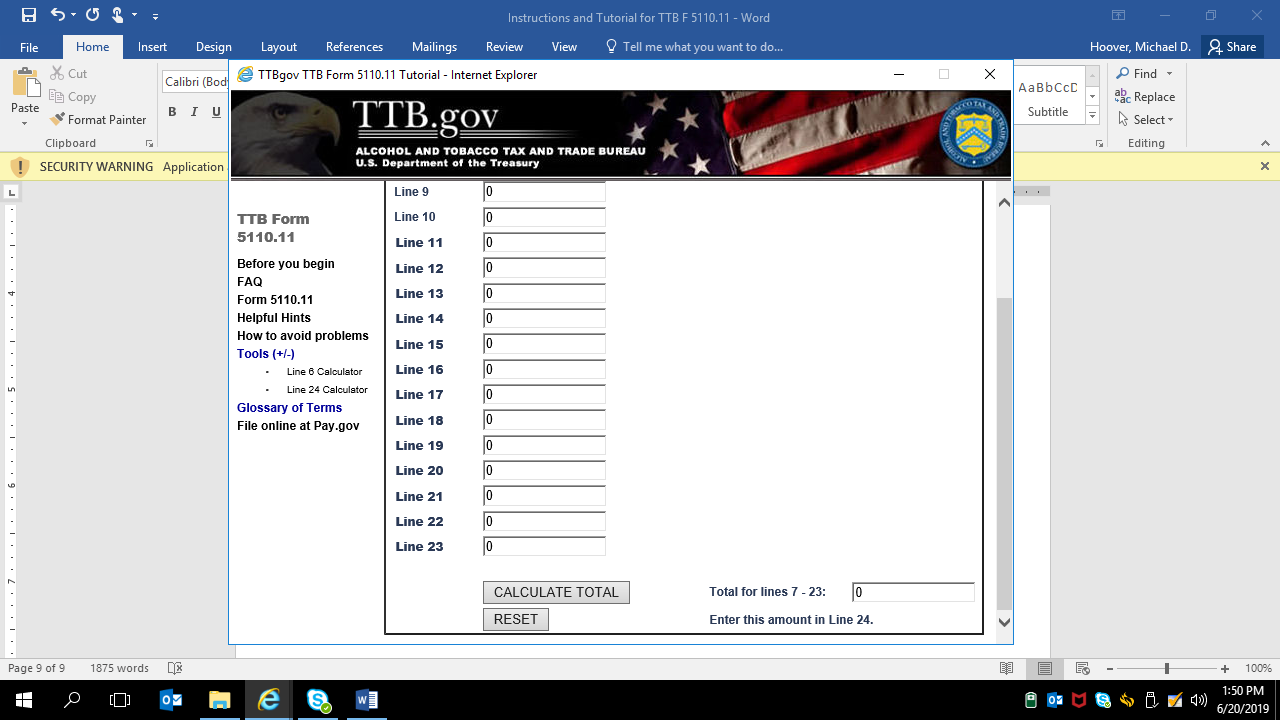
Click on the appropriate letter below to access a list of terms beginning with that letter. Then click the term to access the associated definition.
A B C D E F G H I J K L M N O P Q R S T U V W X Y Z
===============================================
File online at Pay.gov:
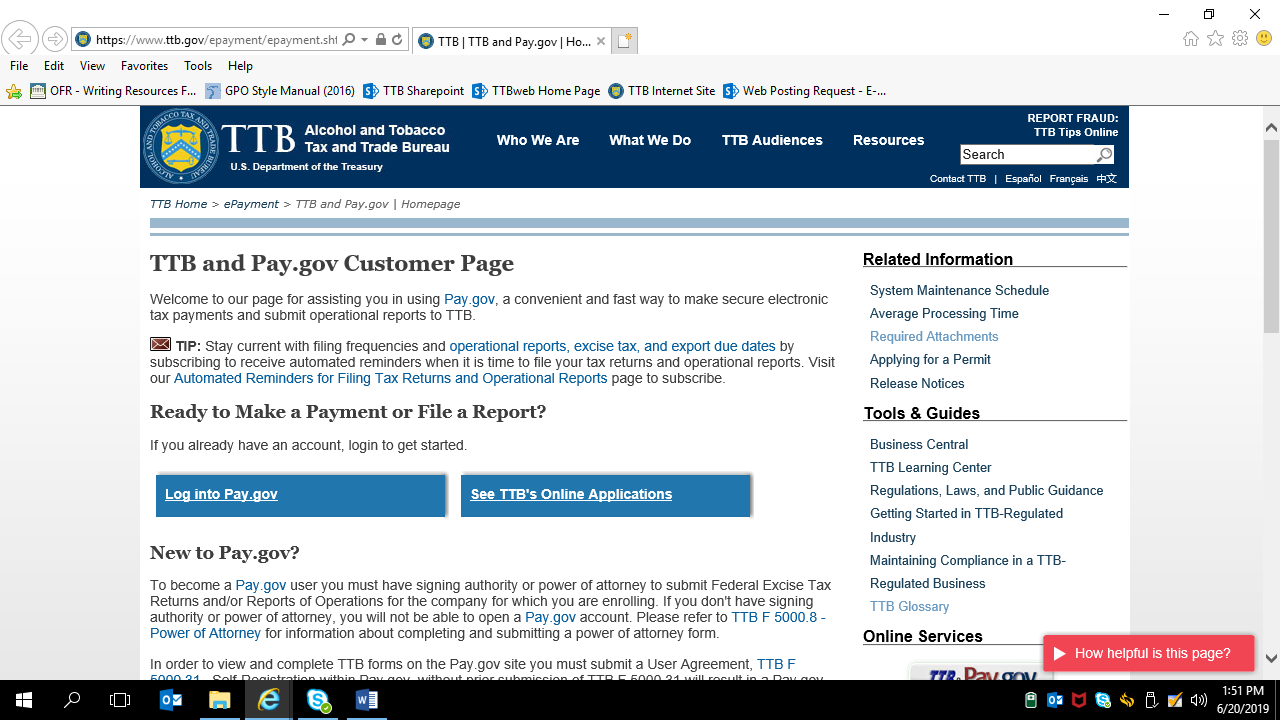
06-20-2019
| File Type | application/vnd.openxmlformats-officedocument.wordprocessingml.document |
| Author | Hoover, Michael D. |
| File Modified | 0000-00-00 |
| File Created | 2021-01-15 |
© 2026 OMB.report | Privacy Policy
 EIN
number
EIN
number